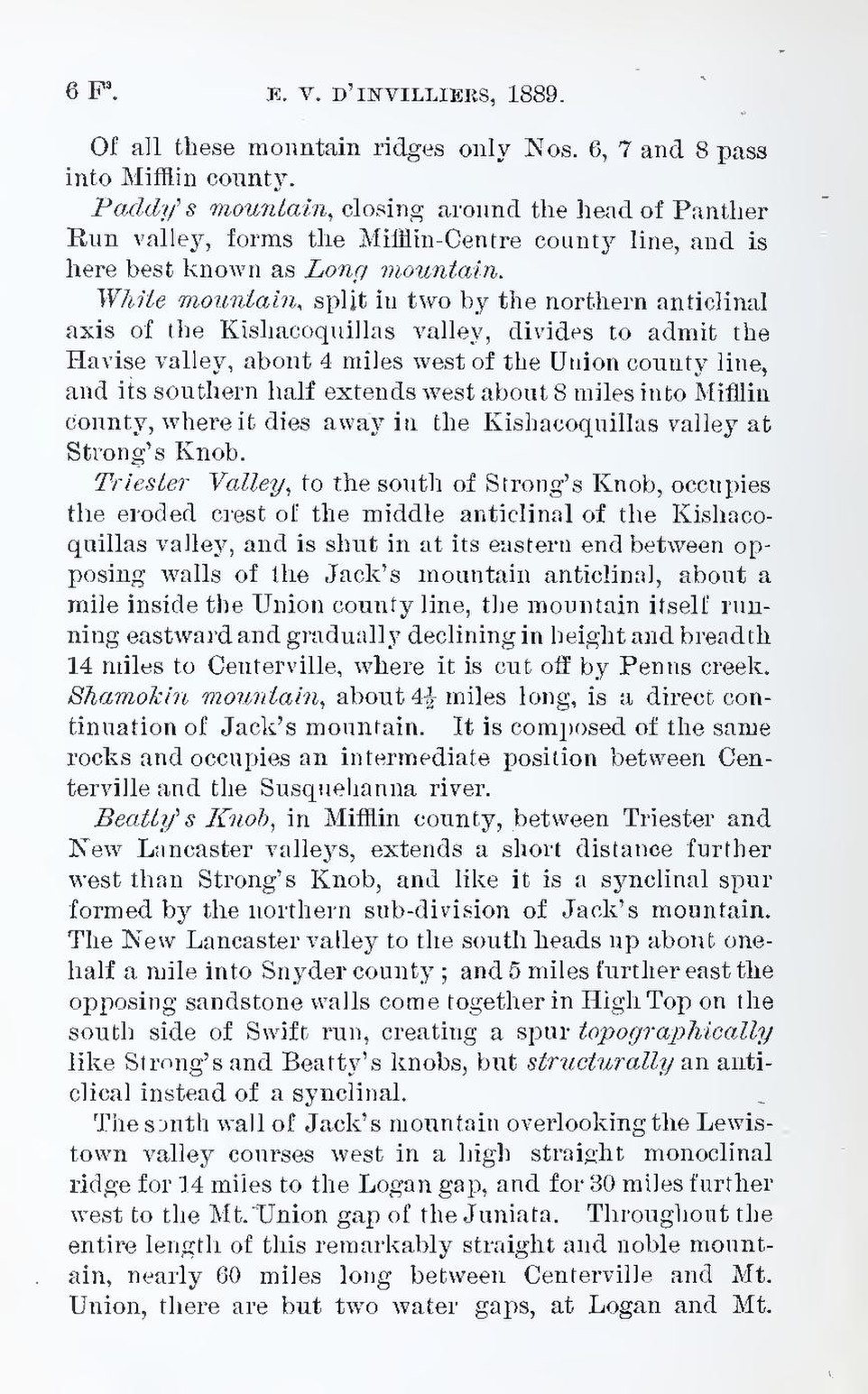Of all these monntain ridges only Nos. 6, 7 and 8 pass into Mifflin county.
Paddy’s mountain, closing around the head of Panther Run valley, forms the Mifflin-Centre county line, and is here best known as Long mountain.
White mountain, split in two by the northern anticlinal axis of the Kishacoquillas valley, divides to admit the Havise valley, about 4 miles west of the Union county line, and its southern half extends west about 8 miles into Mifflin county, where it dies away in the Kishacoquillas valley at Strong’s Knob.
Triester Valley, to the south of Strong’s Knob, occupies the eroded crest of the middle anticlinal of the Kishacoquillas valley, and is shut in at its eastern end between opposing walls of the Jack’s mountain anticlinal, about a mile inside the Union county line, the mountain itself running eastward and gradually declining in height and breadth 14 miles to Centerville, where it is cut off by Penns creek. Shamokin mountain, about 4½ miles long, is a direct continuation of Jack’s mountain. It is composed of the same rocks and occupies an intermediate position between Centerville and the Susquehanna river.
Beatty’s Knob, in Mifflin county, between Triester and New Lancaster valleys, extends a short distance further west than Strong’s Knob, and like it is a synclinal spur formed by the northern sub-division of Jack’s mountain. The New Lancaster valley to the south heads up about one-half a mile into Snyder county; and 5 miles further east the opposing sandstone walls come together in High Top on the south side of Swift run, creating a spur topographically like Strong’s and Beatty’s knobs, but structurally an anticlical lasted of a synclinal.
The south wall of Jack’s mountain overlooking the Lewistown valley courses west in a high straight monoclinal ridge for 14 miles to the Logan gap, and for 30 miles further west to the Mt. Union gap of the Juniata. Throughout the entire length of this remarkably straight and noble mountain, nearly 60 miles long between Centerville and Mt. Union, there are but two water gaps, at Logan and Mt.
